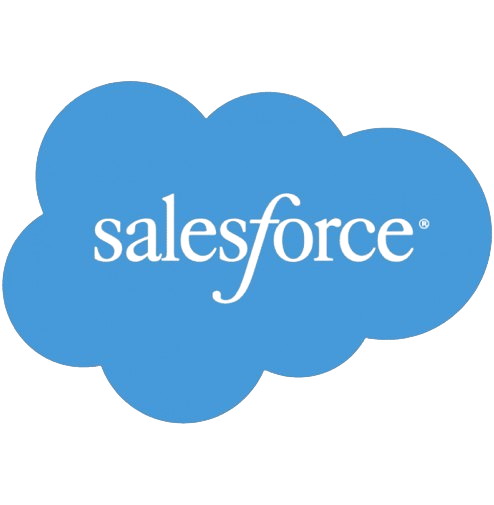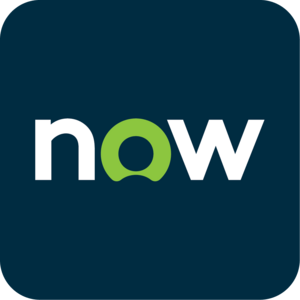ServiceNow HRSD and CSM: Features, Use Cases & Benefits
In 2025, businesses are increasingly turning to intelligent platforms to streamline operations and enhance user experiences, and ServiceNow stands out as a leader in this space. ServiceNow’s HR Service Delivery (HRSD) and Customer Service Management (CSM) modules empower organizations to deliver exceptional employee and customer experiences through automation, integration, and AI-driven insights.
For small and medium-sized businesses (SMBs) and enterprises, these modules offer scalable solutions to optimize HR and customer service workflows.
What are ServiceNow HRSD and CSM?
ServiceNow HRSD and CSM are modules within the Now Platform designed to enhance employee and customer experiences through streamlined workflows and intelligent automation.
– HRSD focuses on automating HR processes, such as onboarding, case management, and employee self-service, to improve workforce efficiency and engagement.
– CSM, on the other hand, optimizes customer service operations by managing cases, interactions, and self-service portals, ensuring faster resolutions and higher satisfaction.
Both modules leverage ServiceNow’s core capabilities, including AI (via Now Assist), integration tools, and low-code development, to deliver seamless experiences.
>> Related Post: What is ServiceNow Assist: Features, Use Cases & Benefits
Key Features of ServiceNow HRSD
ServiceNow HRSD offers a robust suite of features to streamline HR processes and enhance employee experiences. Below are the core capabilities:
1. Employee Service Center
- Description: A centralized, AI-powered portal for employees to access HR services, policies, and knowledge articles.
- Application: Supports self-service for tasks like benefits enrollment or leave requests, reducing HR workload.
2. Case and Knowledge Management
- Description: Automates HR case creation, routing, and resolution with an integrated knowledge base for quick answers.
- Application: Streamlines inquiries such as payroll disputes or policy clarifications with AI-driven suggestions via Now Assist.
3. Employee Journey Management
- Description: Guides employees through lifecycle events, such as onboarding, promotions, or offboarding, with tailored workflows.
- Application: Ensures consistent, personalized experiences across HR processes.
4. AI-Powered Insights (Now Assist for HRSD)
- Description: Uses generative AI to summarize cases, generate FAQs, and predict employee needs based on data patterns.
- Application: Enhances HR efficiency with improved helpfulness rate for AI-generated summaries, per ServiceNow metrics.
5. Integration with Enterprise Systems
- Description: Connects HRSD with payroll, ERP, and IT systems via ServiceNow’s Integration Hub or MuleSoft.
- Application: Creates a unified employee data ecosystem for seamless operations.
>> Related Post: AI & Gen AI in ServiceNow: Types, Capabilities, Use Cases
Key Features of ServiceNow CSM
ServiceNow CSM delivers powerful tools to optimize customer service operations, enhancing satisfaction and efficiency. Below are the core features:
1. Omni-Channel Engagement
- Description: Supports customer interactions across email, chat, phone, SMS, and social media with a unified agent workspace.
- Application: Ensures consistent service across channels, improving the overall response times.
2. Case Management and Automation
- Description: Automates case creation, routing, and escalation with AI-driven prioritization via Now Assist.
- Application: Reduces manual effort and deflects of routine cases through self-service.
3. Self-Service Portal
- Description: Provides a customizable portal for customers to access FAQs, track cases, and submit requests.
- Application: Increases self-service adoption, reducing agent workload.
4. AI-Powered Insights (Now Assist for CSM)
- Description: Uses generative AI to summarize cases, suggest replies, and predict customer needs.
- Application: Speeds up agent responses and improves case accuracy.
5. Playbooks for Guided Workflows
- Description: Offers pre-built workflows to guide agents through complex processes, such as returns or refunds.
- Application: Ensures consistent service delivery and reduces training time.
>> Related Post: ServiceNow Pricing Guide: Custom Quotes for IT Solutions
Use Cases for HRSD and CSM
ServiceNow HRSD and CSM deliver practical solutions across industries, addressing specific pain points for SMBs and enterprises:
HRSD Use Cases:
1. Employee Onboarding: Automates tasks such as document submission, training schedules, and welcome emails, simplifying the process for new hires. This reduces setup time, making onboarding seamless for HR teams and employees alike. For example, a healthcare firm might use this to streamline new staff integration, saving resources.
2. HR Case Resolution: Enables self-service portals for employees to resolve inquiries like payroll discrepancies or benefits questions, deflecting cases that would otherwise require HR intervention. This enhances efficiency, as seen in a tech startup improving query handling.
3. Employee Engagement: Utilizes journey management to personalize employee experiences, such as career development events or promotions, fostering satisfaction and retention. A public sector organization might tailor career paths to boost morale.
4. Compliance Management: Integrates with compliance systems to track certifications and ensure adherence to labor laws and regulations, critical for industries like healthcare and finance. This ensures regulatory compliance, as demonstrated by a public sector entity maintaining standards.
CSM Use Cases:
1. Customer Support Automation: Automates routine inquiries, such as password resets or account updates, through virtual agents, reducing the need for human agents. A retail SMB might use this to lower call center costs by deflecting tickets.
2. Proactive Issue Resolution: Employs AI to predict customer issues, like service outages, and resolve them before they escalate, improving trust. A telecom company could use this to enhance customer satisfaction by addressing potential problems early.
3. Order Management: Streamlines order tracking and returns via self-service portals, enhancing user experience. An e-commerce business might improve customer interactions by simplifying these processes.
4. Field Service Integration: Coordinates field service requests with customer cases, optimizing technician scheduling and response times. A utility company could use this to improve service delivery efficiency.
>> Related Post: Salesforce vs ServiceNow: Which one is better in 2025?
Benefits of ServiceNow HRSD and CSM
ServiceNow HRSD and CSM deliver transformative benefits that enhance efficiency and user experiences:
1. Increased Productivity: Automates repetitive tasks such as case summarization, ticket routing, and onboarding processes, freeing HR and customer service agents to focus on strategic initiatives.
2. Enhanced User Experience: Self-service portals and AI-driven insights improve employee and customer interactions, making services more accessible and personalized.
3. Cost Savings: Reduces operational expenses by deflecting inquiries through automation, lowering the need for manual intervention in HR and customer service. This is particularly beneficial for large deployments, where resource allocation can be optimized.
4. Scalability: Offers low-code tools and integrations, allowing businesses to scale solutions without extensive IT resources. This flexibility is crucial for SMBs looking to grow without significant investment, ensuring adaptability to changing needs.
5. Data-Driven Insights: Provides predictive analytics through Now Assist, improving decision-making and operational efficiency.
6. Compliance and Security: Ensures adherence to data protection standards like GDPR and HIPAA, with robust audit trails and privacy measures. This is essential for industries with strict regulatory requirements, ensuring trust and legal compliance.
7. Rapid ROI: Businesses report productivity gains shortly after implementation, driven by out-of-the-box skills and minimal setup time.
ServiceNow Services Offered by Cloud Consulting Inc.
At Cloud Consulting Inc., we are dedicated to turning your business aspirations into reality through our comprehensive ServiceNow services:
Conclusion
ServiceNow HRSD and CSM are powerful modules that transform HR and customer service operations in 2025. HRSD’s Employee Service Center, journey management, and AI insights streamline employee experiences, while CSM’s omni-channel engagement, case automation, and self-service portals elevate customer satisfaction.
Partner with Cloud Consulting Inc. to leverage HRSD and CSM’s full potential, integrating them with Integrow for a unified, AI-driven ecosystem. Contact CCI today to transform your workflows and achieve lasting success.
FAQs
1. What is the primary function of ServiceNow HRSD and CSM?
HRSD automates HR processes like onboarding and case management, while CSM streamlines customer service with omni-channel support and AI-driven automation.
2. How do HRSD and CSM integrate with other systems?
They connect via ServiceNow’s Integration Hub or MuleSoft, syncing with ERP, payroll, and CRM systems for seamless data flow.
3. What is the implementation timeline for HRSD and CSM?
Basic setups take 2-4 months, with CCI streamlining deployment for faster adoption.
4. Are HRSD and CSM suitable for SMBs?
Yes, their low-code tools and scalable pricing make them accessible, with CCI offering tailored solutions for SMB budgets.
5. How do HRSD and CSM ensure compliance?
They align with GDPR, HIPAA, and other regulations through robust data protection and audit capabilities.









